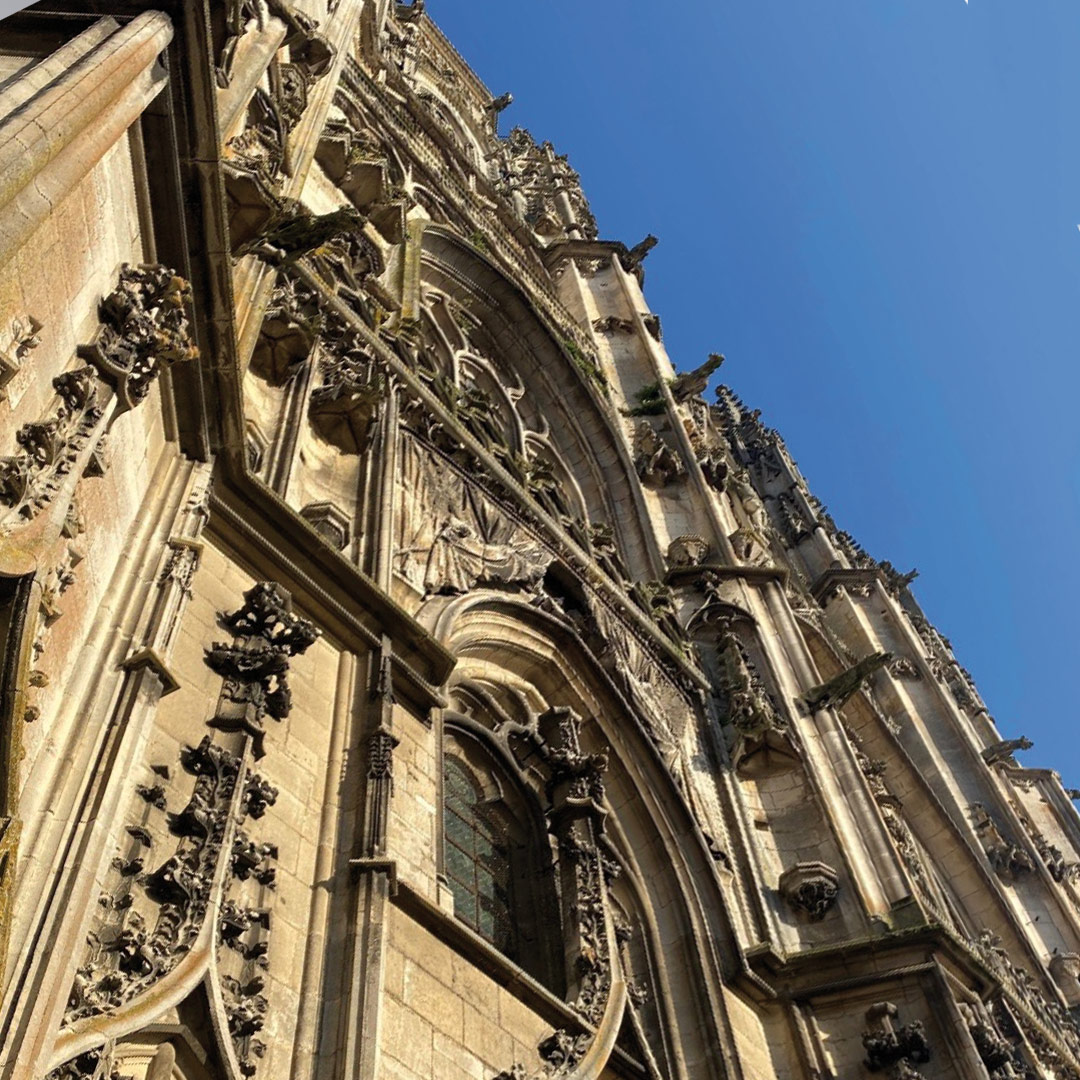Saint-Etienne Cathedral, Toul
Moselle, river kilometre 372
In the 4th century, under the first bishop Mansuetus, an episcopal church was built outside the then city, which was later moved into the city. After a fire, it was rebuilt in the 9th century by Bishop Frothar. In the 10th century, a Romanesque building was begun under Bishop Gerhard I of Toul. In 1221, Bishop Eudes II de Sorcy began building the Gothic cathedral on the foundations of the previous building. The cloister was completed in the 14th century. Disagreements between Burgundy and Lorraine delayed further construction. With the west façade, the building was largely completed in 1496.
During the Second World War, bombs caused fires and destroyed the roof. A new roof truss was completed in 1995, and restoration work on the interior continued until 2008. The cathedral is owned by a municipality.
The 15,000 inhabitants of Toul are called Toulois. In antiquity, the Gallic tribe of the Leucians, mentioned by Caesar in his De Bello Gallico, settled in the area around the city. Their neighbours were Mediomatricians, Lingones and Sequans. The Leucians, like their neighbours, supplied grain to Caesar when the Roman army camped at Vesontio (Besançon) to prepare for the campaign against Ariovist (58 BC; De Bello Gallico, I, 40).
In 1777, the bishopric was divided, Toul – Nancy. Until the French Revolution, the Trois-Évêchés formed the province of the Three Bishoprics. The French Revolution dissolved churches, monasteries and abbeys, the bishopric after almost 14 centuries with the Concordat of 1801. (Source: Wikipedia)
